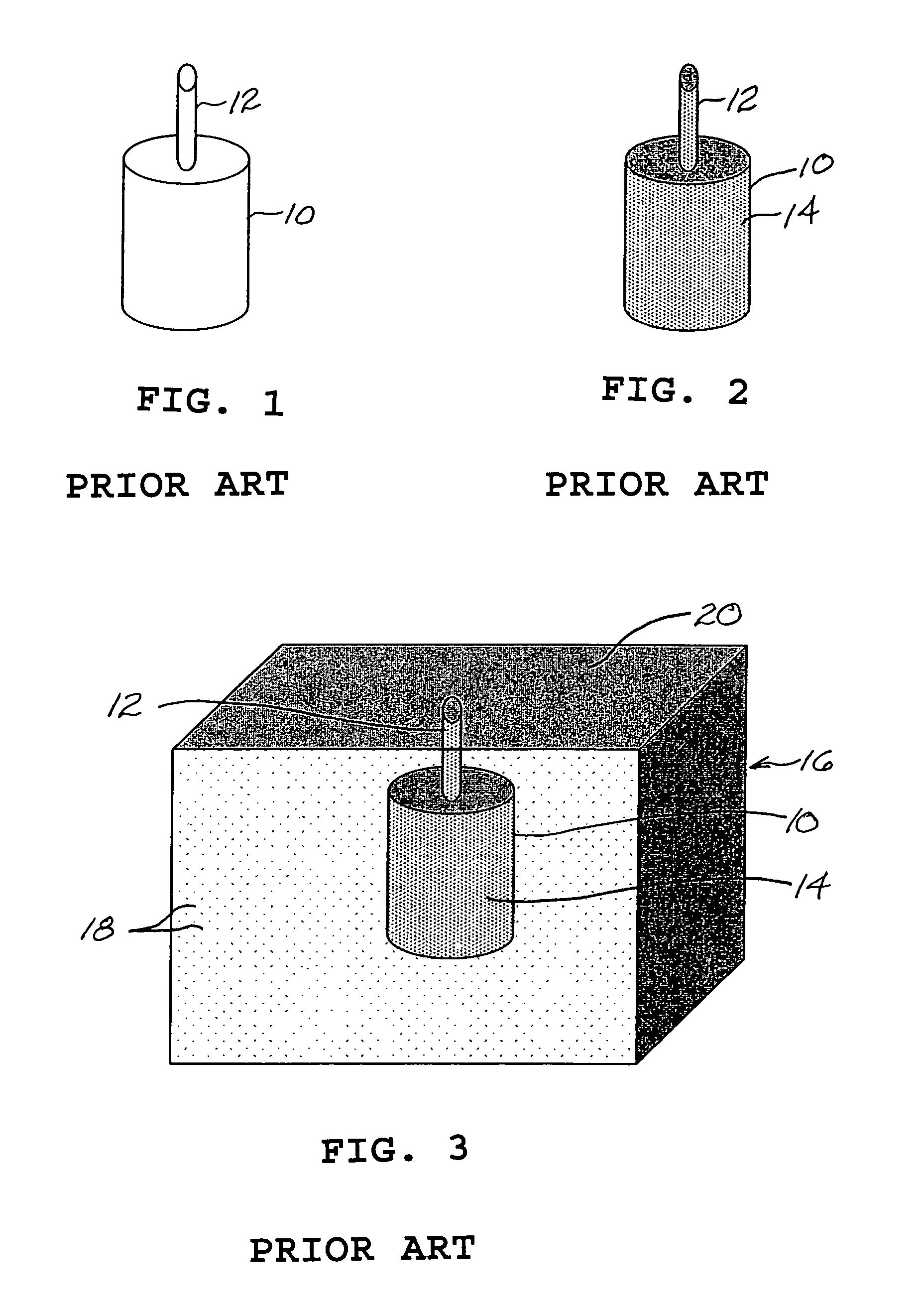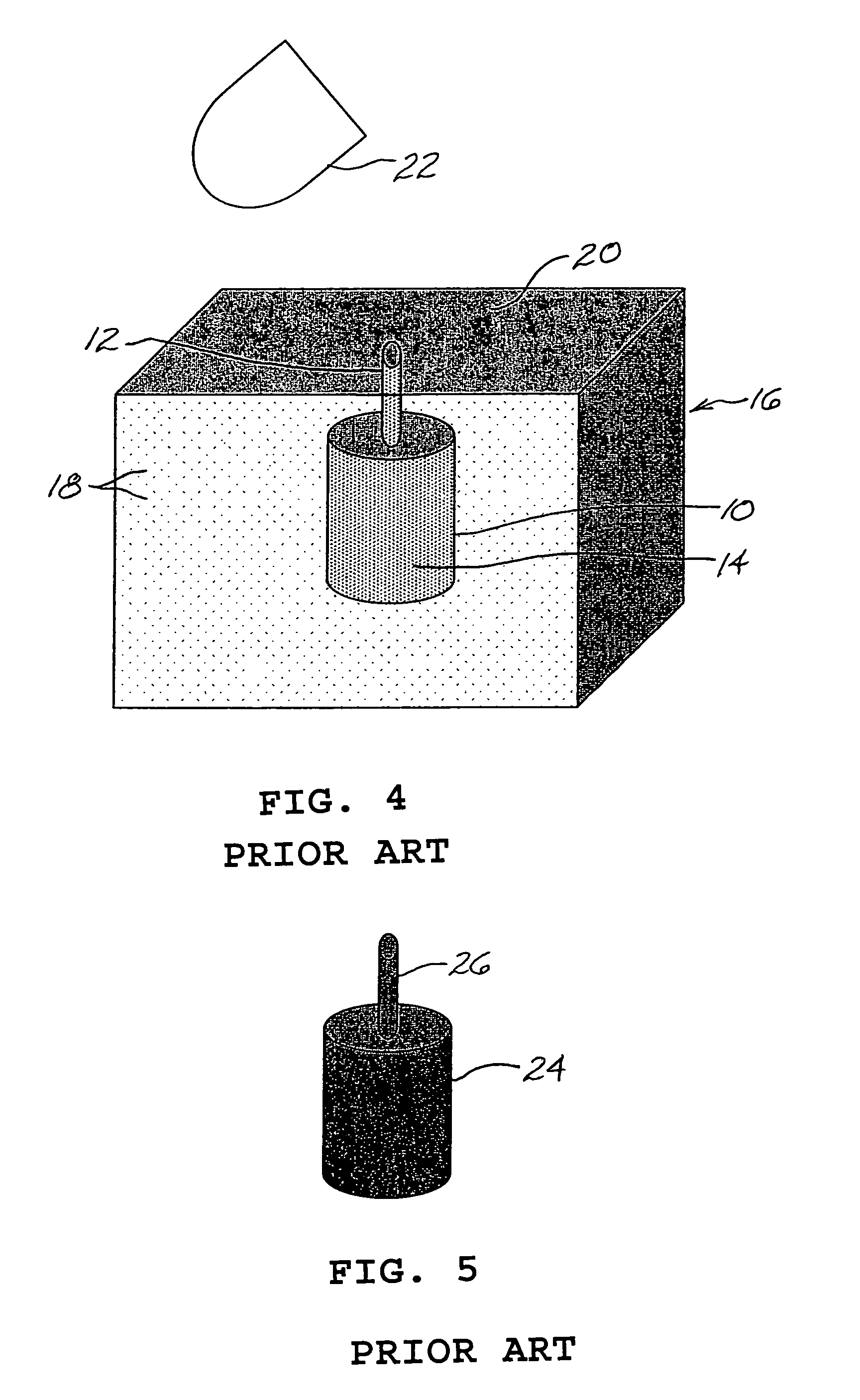Lost pattern mold removal casting method and apparatus
- Summary
- Abstract
- Description
- Claims
- Application Information
AI Technical Summary
Benefits of technology
Problems solved by technology
Method used
Image
Examples
example 1
[0107]With reference now to FIG. 12, in the first example, a Styrofoam-type pattern 120 was assembled to form the pattern of a cylinder head. Whereas the internal passageways within a lost foam casting are normally formed by a multi-layered foam pattern, in this first example the internal passages are formed by sand cores 122. Preferably, the sand cores are bonded with a water-soluble binder, but may be bonded with any conventional binder. In this first example, the styrofoam pattern was not constructed from the usual many layers glued together, but was formed in a single operation around the sand cores. Thus although the sand cores are a potential disadvantage, this drawback is countered to some extent by the avoidance of several additional pattern sections, and by the avoidance of the assembly of the several layers of the pattern in a number of gluing stations.
[0108]As shown in FIG. 13, the composite pattern may be coated by dipping into a water-based ceramic slurry of a known typ...
example 2
[0128]As a second -example, the lost foam pattern with internal bonded cores, as shown in FIG. 12 is the starting point as before.
[0129]However, this time no dip coating is made (i.e. coating 124 shown in FIG. 13 is avoided). This saves much time for drying, and saves an important consumable cost.
[0130]The remainder of the processing is identical to that described in Example 1 above.
example 3
[0131]With reference now to FIG. 17, in a third example, the lost foam pattern is produced complete, almost as would be a normal lost foam pattern. This third example therefore retains most of the advantages of the original lost foam process, whilst gaining the substantial benefits of the ablation freezing technique. Only the exterior part of the mold is somewhat different from conventional lost foam process, as will be described below.
[0132]As with a conventional lost foam product, the separate parts of a pattern 220 are glued and assembled so as to create the shape of the desired casting, leaving empty an internal area 230 inside the completed pattern that will eventually form the cavities in the finished casting. Such cavities include for instance water cooling passageways, and oil ways etc.
[0133]With reference now to FIG. 18, the foam pattern is then subjected to coating by dipping into a ceramic slurry 240, in the technique conventionally employed for the formation of lost foam...
PUM
| Property | Measurement | Unit |
|---|---|---|
| pressure | aaaaa | aaaaa |
| specific gravity | aaaaa | aaaaa |
| pressure | aaaaa | aaaaa |
Abstract
Description
Claims
Application Information
 Login to View More
Login to View More - R&D
- Intellectual Property
- Life Sciences
- Materials
- Tech Scout
- Unparalleled Data Quality
- Higher Quality Content
- 60% Fewer Hallucinations
Browse by: Latest US Patents, China's latest patents, Technical Efficacy Thesaurus, Application Domain, Technology Topic, Popular Technical Reports.
© 2025 PatSnap. All rights reserved.Legal|Privacy policy|Modern Slavery Act Transparency Statement|Sitemap|About US| Contact US: help@patsnap.com



